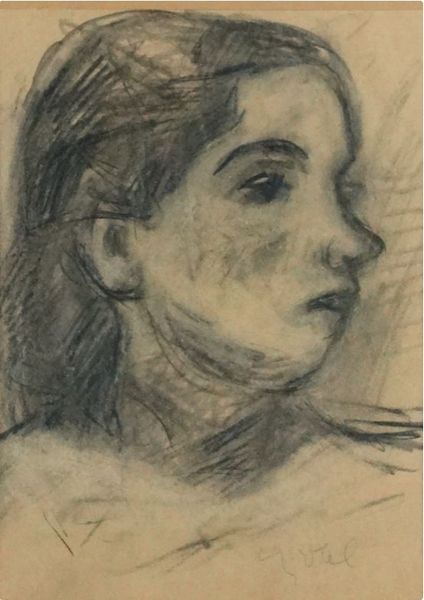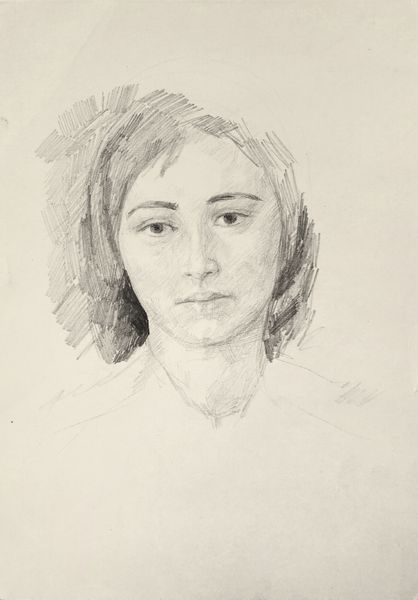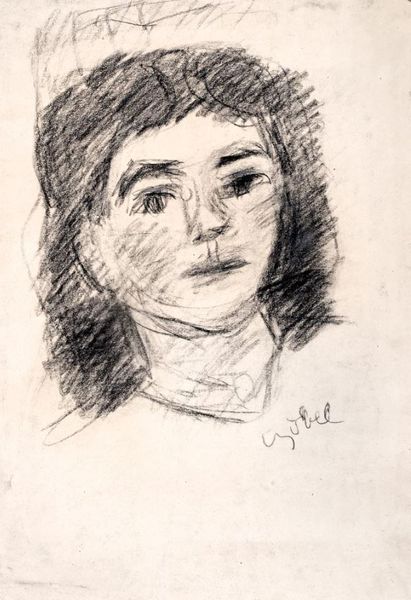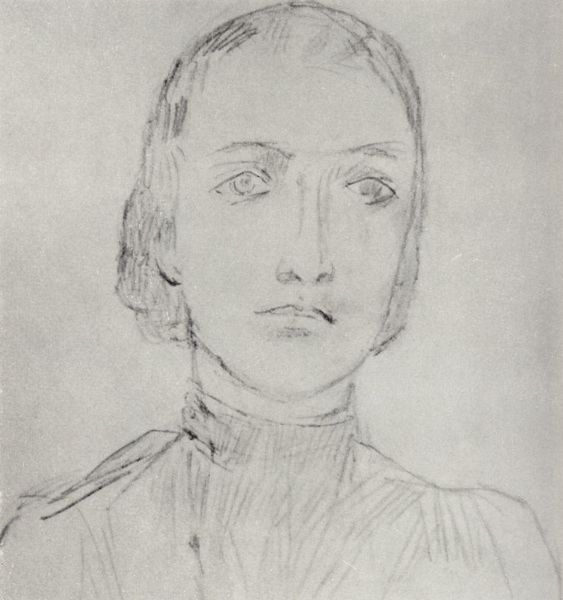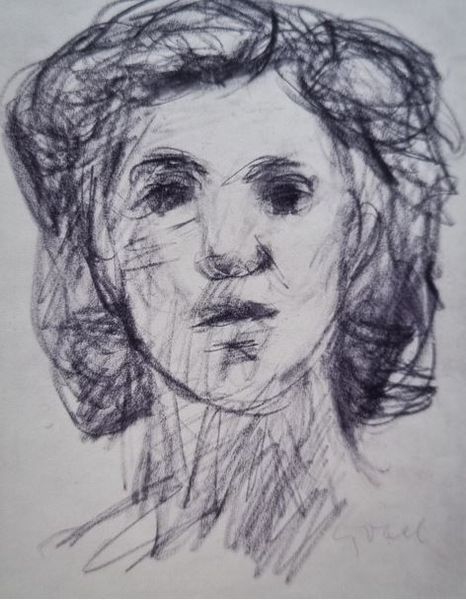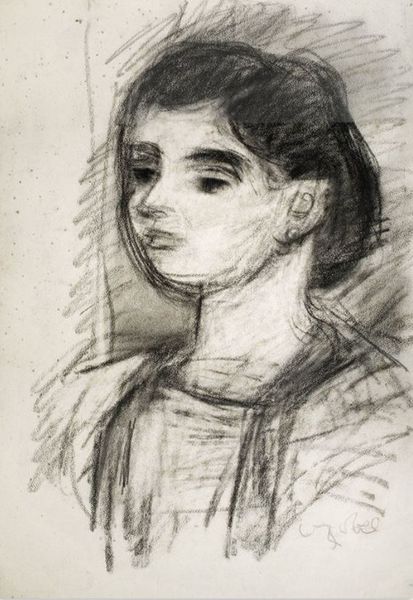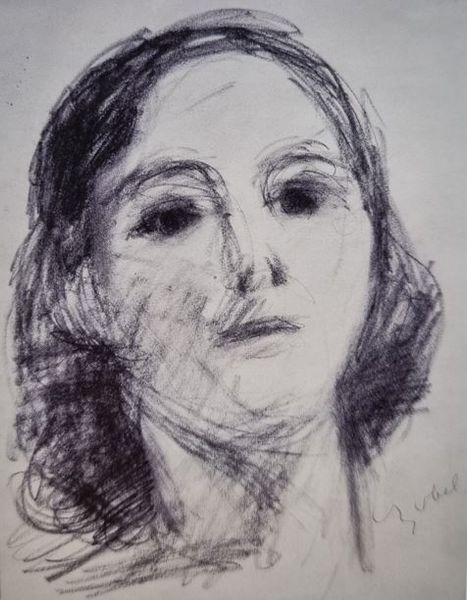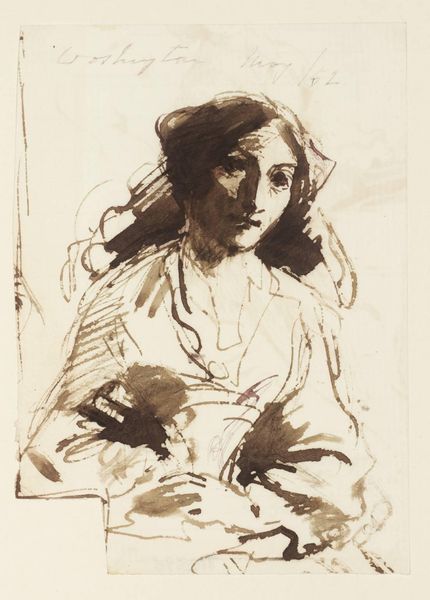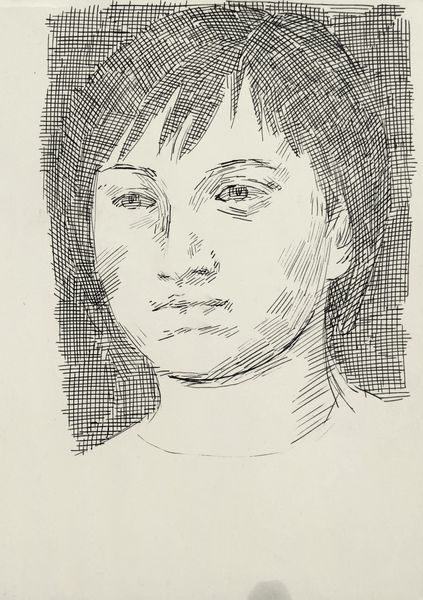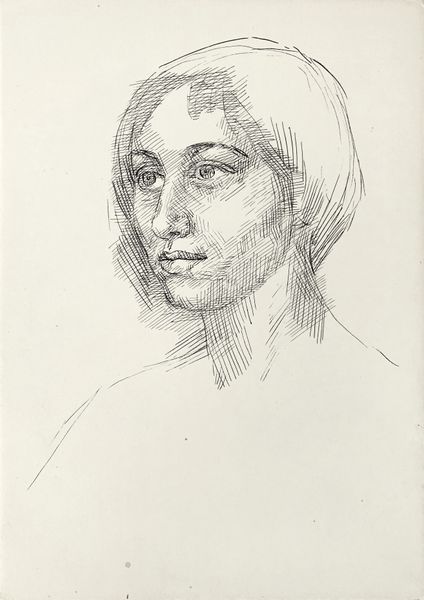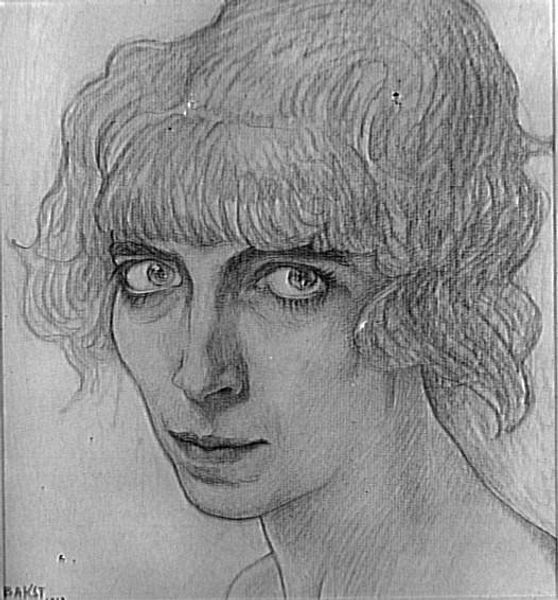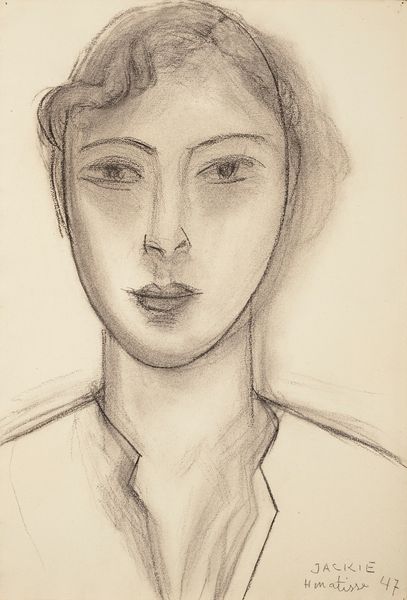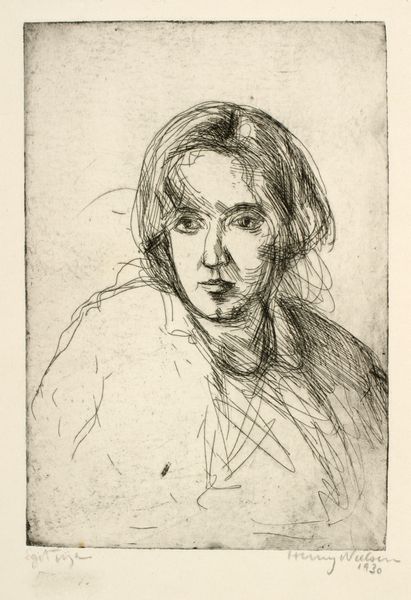
Copyright: Public domain US
Editor: Here we have Zinaida Serebriakova's "Self-portrait" from 1900, rendered in pencil. I’m struck by the seeming simplicity of the materials, contrasted with the piercing gaze of the subject. What draws your eye? Curator: I see a remarkable emphasis on the means of production, a breaking down of traditional hierarchies that separated 'high art' like oil painting from humble drawings. The labor-intensive process of building up the image with pencil strokes is laid bare. Do you think this act of revelation might connect to the social context of the time? Editor: That’s an interesting point. I guess showing the labor de-romanticizes the artistic process… but how does it connect with its social context? Curator: Well, consider the turn of the century – the rise of industrialization, burgeoning consumer culture. The hand-drawn portrait almost becomes a counterpoint, emphasizing the individual touch in an age of mass production. Look at the materiality of the pencil itself. Was it a mass-produced item, readily available, or a more carefully crafted tool? How does that detail influence our understanding? Editor: So, even the choice of a seemingly simple material speaks volumes about the artist's stance, their commentary on labor and value. Curator: Precisely. It challenges us to question what we consider valuable, not just in art but in society as a whole. Editor: It's made me think about the power of simple materials to communicate complex ideas. I appreciate your perspective, Curator! Curator: And you've helped me see how even a seemingly straightforward self-portrait can unpack broader societal shifts. Thank you!
Comments
No comments
Be the first to comment and join the conversation on the ultimate creative platform.
